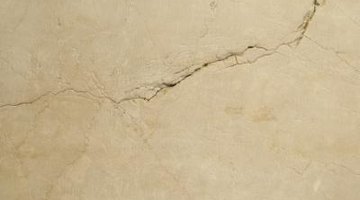How to French Plaster Walls
Aging your walls with faux plaster is a quick and inexpensive way to upgrade the look of a room, give it character and set off a few French antiques. The technique term is a misnomer, because you are creating a look with paint, not plaster. It will, however, with very little expertise on your part, exactly resemble chalky, aging plaster when you are through.

-
Mix colors that will give you the effect you want. For example, raw sienna and yellow ochre will produce a yellowed plaster; burnt umber gives a warm color. Burnt umber and burnt sienna are a darker shade that mimics the buildup of smoke over time -- from candles, cooking fires or dirt. For a sunnier plaster, keep the base coat very light and use an apricot-based or rose top color for a glaze.
-
Dilute the paint with water to the correct color. Add a cup of scumble glaze to the paint for greater transparency and more pliability. Scumble glaze is nearly transparent and extends drying time, giving you more time before the paint dries to an "edge" where you are working. The glaze helps to hold the marks you make as you age the wall.
-
Dry brush the paint as it starts to dry or rub with a dry cloth. This removes some paint and creates some streaky buildup like real stained walls.
-
Let the first coat dry. Repeat the process with an even more diluted darker color and allow some dark paint accumulation in the corners and along the baseboards. Use a wide, short-bristled hake brush to blur the color even more.
-
Sand a few spots lightly to remove the finish and expose paint layers underneath, creating the sort of wear you might find on a real aging plaster wall in an old house in France.
References
Writer Bio
Benna Crawford has been a journalist and New York-based writer since 1997. Her work has appeared in USA Today, the San Francisco Chronicle, The New York Times, and in professional journals and trade publications. Crawford has a degree in theater, is a certified Prana Yoga instructor, and writes about fitness, performing and decorative arts, culture, sports, business and education .
Photo Credits
- Hemera Technologies/AbleStock.com/Getty Images
More Articles



